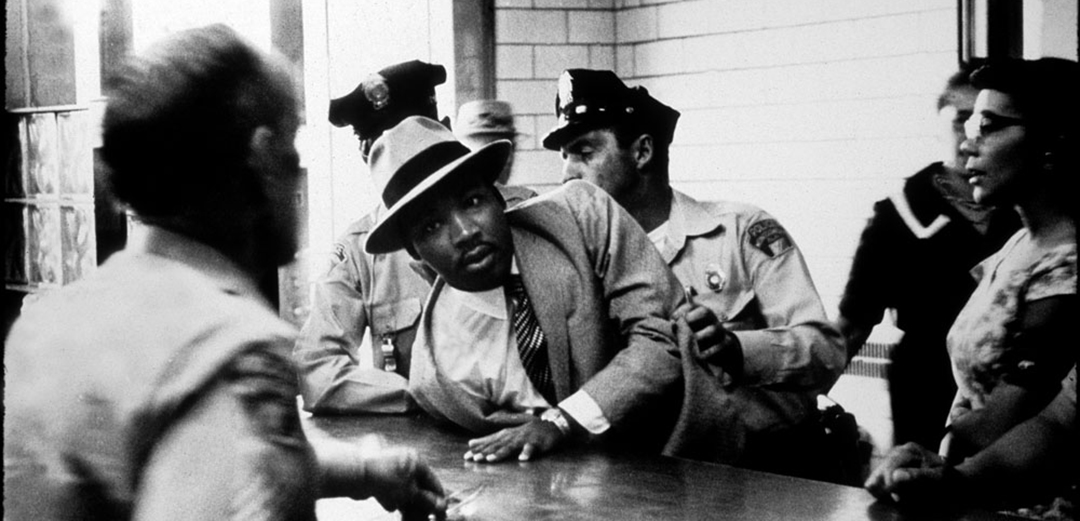“Nonviolence is fine as long as it works.” – Malcolm X
The second season of lynchings that started after World War II ushered in a second wave of Blacks leaving the south. This time they weren’t just coming north. They were also heading as far west as Los Angeles, Long Beach and Oakland.
While the first Great Migration was made up mostly of Blacks from rural areas of the South, this time it was Blacks from urban areas of the South leaving in droves. More than five million Blacks left the South from 1940-1970, only 1.5 million left during the first Great Migration. With no Southern politician in the legislature willing to support anything that even came close to anti-lynching legislation, there was little reason to believe that anything was going to change.
I have mentioned several times that the further removed Blacks got from slavery, the way they defined themselves changed, and as a natural consequence, their expectations changed.
Blacks weren’t the only ones who had been changing.
By the 1950s, White America had also moved several generations away from Slavery.
The best explanation young Southerners had as to why Jim Crow existed was because “it’s just the way it is and has always been”.
The murder of Emmett Till struck a nerve with Black Americans, but it had also done so in White Americans. William Faulkner, who was not only a Southerner but also a Mississippian, had this to say about Till’s murder, “If the facts as stated in the Look magazine account of the Till affair are correct, this remains: two adults, armed, in the dark, kidnap a fourteen-year-old boy and take him away to frighten him. Instead of which, the fourteen-year-old boy not only refuses to be frightened, but, unarmed, alone, in the dark, so frightens the two armed adults that they must destroy him…. What are we Mississippians afraid of?”
Even the wide support Roy Bryant and his half-brother J. W. Milam, the murderers of Emmett Till, enjoyed during their trial had all but dried up after they admitted in a magazine to killing the child.
Both men were publicly shunned, their businesses boycotted, they went bankrupt and eventually had to leave the State to try to live the best they could in anonymity in Texas.
Whites had gotten to the point where how they defined themselves allowed for empathizing with the humanity of Black Americans. I know that sounds strange to say it that way, but really, there is no other way to put it. Remember, it was this aspect of slavery, the dehumanizing of enslaved Africans as “things”, that allowed them to keep the emotional distance necessary to maintain such a cruel institution. Like I said before, Blacks didn’t suddenly stop defining themselves as slaves after they stepped off the plantation any more than Whites stopped defining themselves as Masters. It took being decades removed from it before empathy for their former slaves was even possible.
White America’s response to Emmett Till’s murder on a national level was aligned to Black America’s response. Indicating that, for the first time in American History, Black humanity, at least at a basic level was being acknowledged by a gaugeable majority of Whites.
It’s important to note that the murder of Emmett Till did not create a shift in how Whites defined themselves, but just revealed it. There was now an “uncomfortable” dissonance between those Whites who refused to recognize the humanity of Black Americans from those that did. So when the call went out by the NAACP looking for foot soldiers, it wasn’t only Blacks who answered the call.
The men and women, both black and white, who had signed up for non-violent acts of civil disobedience to desegregate the South were under no allusions as to what kind of violence they were going to face. The Ku Klux Klan was and is America’s oldest terrorist organization. Terrorists are to violence what automobiles are to gasoline. Violence is not only what gets their engines going, and the only way they can get from point A to point B.
The genius of the Civil Rights movement was in understanding this fact, and the genius behind how to respond to this violence was a man named Bayard Rustin.
Rustin was an openly gay black man and civil rights activist and leader in his own right, who had travelled to India in 1948 to learn directly from the followers of Gandhi. Bayard Rustin was also like a talent scout, as he was also the person responsible for identifying an emerging Baptist Minister by the name of Martin Luther King Jr. as being a promising young civil rights leader and then persuading him to commit to using the principles of non-violence.
Rustin had been arrested a few years earlier in 1953 for a homosexual act, which was still criminalized in most states at the time, and throughout his time as a personal advisor to King, other civil rights leaders as well as the segregationists who opposed them, regularly called for King to distance himself from Rustin for being a homosexual.
When you are talking about something as paradigm shifting as the Civil Rights movement was to America, you want to be careful not to pin too much credit for its success on a single individual. The success of the Civil Rights Movement required an unimaginable amount of courage and sacrifice, not by one, but by many people to succeed. With that said, strictly looking at the role non-violent civil disobedience played in the Civil Rights movement’s success, it wouldn’t be too far off base to say that if there is no Rustin, then there is probably no successful Civil Rights Movement.
One thing that was a certain, was that the Southern White segregationists were going to react to Blacks “stepping out of place” with violence. Everyone knew it. The plan was to turn that violence against them, not literally, but in the court of public opinion.
Every time these White segregationists reacted to blacks protesting with violence, the plan was to have those images plastered all over on the nightly news all across the country. The idea was simple; let the whole country see for themselves the brutality that Black Americans live with daily in the South. Although television had been around since the late 1920s, but it wasn’t until the 1950s that television had finally come into its own as the main instrument that shaped public opinion.
When southern Conservatives filibustered, or voted anti-lynching legislation before, no one even questioned it, let alone judged them for it. Now that images of dogs being let loose on people wanting to order a sandwich and water hoses being turned on people waiting at bus stops were being spread all over the country every night, these Conservative Southern Democrats found themselves facing an increasingly concerned American people that wanted answers. No matter what issue these Southern Democrats wanted to talk about, some reporter eventually asked a question regarding their thoughts about whatever latest piece of brutality had been seen on television the night before, in every home in America.
The violence that had served white supremacist so well was now, finally, betraying them.
In the past, if one act of violence didn’t work, all you had to do was turn it up another notch and surely you would get the desired result, but after Emmett Till, it seemed, turning up the violence only fueled their resolve.
This new kid on the block named Martin Luther King Jr. who was leading a non-violent, peaceful Bus Boycott in Montgomery, the Alabama KKK actually had people come bomb his house.
Bombed. As in exploded it into tiny little pieces.
Does that sound like the appropriate response to someone who says, “Until you agree to treat me the same as any other paying customer, I will walk to wherever I need to go”?
Southern segregationists couldn’t understand America’s outrage.
“What are you all getting so upset about? It’s just niggers?”
By the time white supremacists in the south realized what was happening so much damage had been done in the court of public opinion that anything they said in their defense only made things worse.
Eventually, those very same Southern Conservatives in Congress who had always, faithfully filibustered any anti-lynching legislation that would’ve went up to vote went back to their constituents asking them to stop the violence, but when they did they were met with accusations that they had become traitors and were now siding with “the Negroes”.
In 1957, President Dwight D. Eisenhower, a hero of World War II, had to get involved making sure that the orders of the federal courts to desegregate the public schools were enforced. In Arkansas, Governor Orval Faubus had ordered the Arkansas National Guard to prevent nine Black young men and women from attending an all-white high school. The next day, Dwight D. Eisenhower ordered the Arkansas National Guard to return to their barracks and ordered Troops from the 327th Regiment, 101st Airborne, to escort and keep those Nine African-American young men and women safe as they desegregated Central High in Little Rock Arkansas.
The significance of this cannot be understated.
The Army of these United States of America was protecting Blacks from the reprisal White segregationist, something they, or anyone for that matter hadn’t done in America since the Reconstruction.

